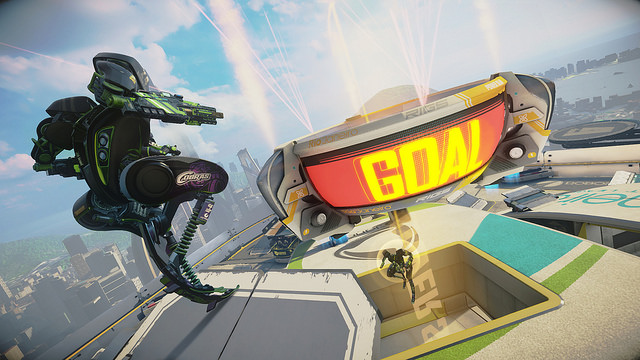Your mech is also the ball.
In one of those rare paradoxical moments, I was glad for a crash in the middle of a demo. After waiting in line for over an hour, following a briefing on how the controls of RIGS: Mechanics Combat League, the new robotic suit e-Sports title from Guerrilla Games, they added the caveat that the…











